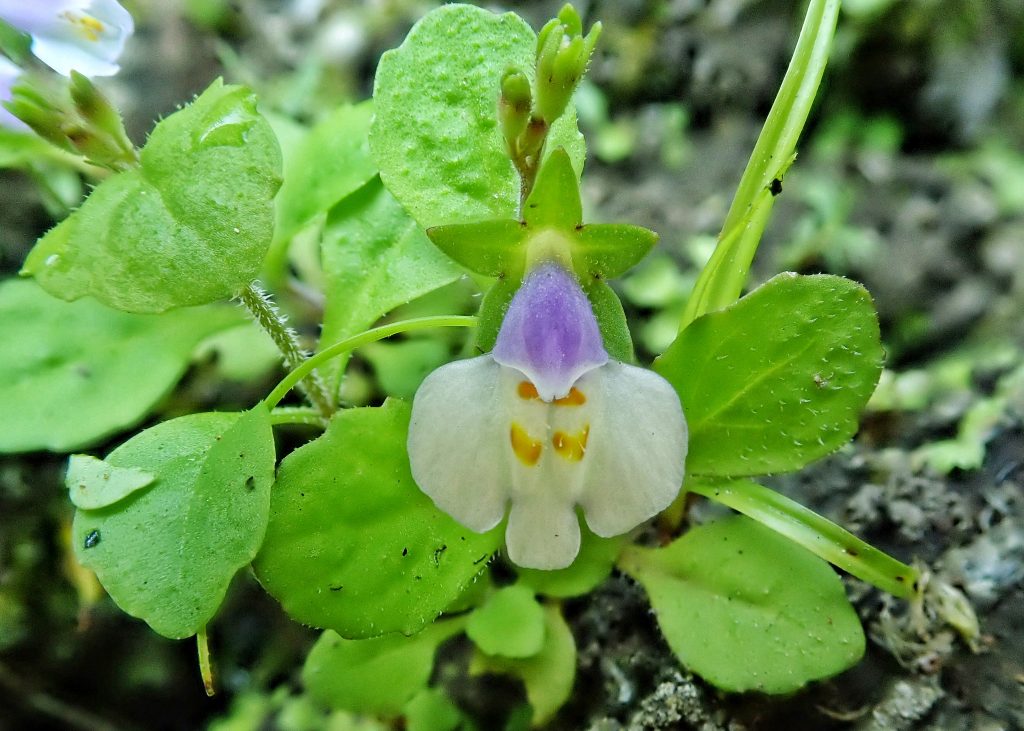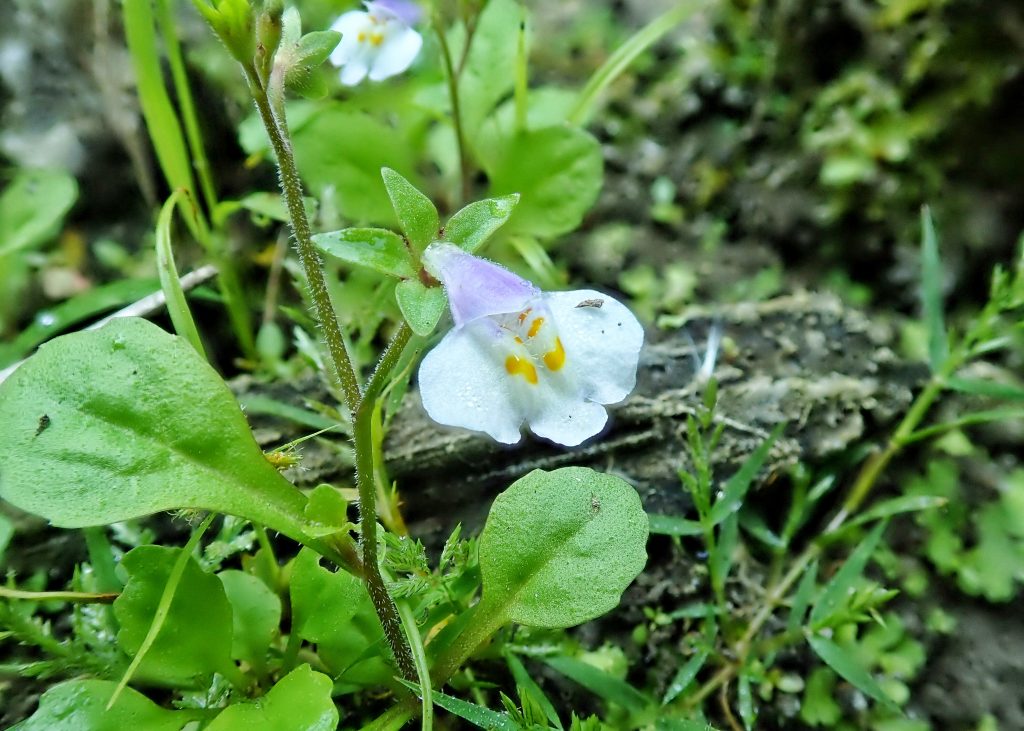
Japanese Mazus is a pretty little plant which seldom gets more than 8” tall. One look at the flowers and you will understand why it has been in the families Scrophulariaceae andPhrymaceae (which includes the monkeyflowers) before ending up in its own family, Mazaceae. The small flower (7-10mm) has 5 irregular petals. The top two are blue, fused, and toothed at their tip. The bottom 3 are partially fused, white, with yellow markings and hairs in the throat. The plant is erect with lightly haired, irregularly toothed or lobed leaves, which may be opposite or alternate, and are usually larger at the base than on the stem.
It is an escapee from gardens, where it is sometimes planted as a ground cover. It is also accidentally introduced in plantings because it is a bit of a greenhouse/nursery pest and hitchhikes on potted plants. Where it is native in eastern Asia it can be found at up to 11,000’ elevation. It is found in wet soil in grasses, disturbed ground, and wetlands. It is not yet considered to be an invasive species. In our region it has naturalized along the Lower Columbia and Willamette Rivers.
The family and genus names come from the Greek word mazos, which means breast and refers to the ridges in the corolla. The species epithet pumilus means dwarf.

https://uswildflowers.com/detail.php?SName=Mazus%20pumilus
https://pfaf.org/User/Plant.aspx?LatinName=Mazus+pumilus
Size- Up to 8” tall
Habitat- Damp, heavy soil in grasses, wetlands, and disturbed ground.
Range- Urban areas, and has naturalized along parts of the Lower Columbia and Willamette Rivers. Non-native
Blooms- Summer
Pretty little pest!